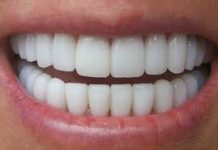Dental bone graft.
A dental implant procedure is universally credited to replace one or more missing teeth; it is the best solution also for patients who have lost all their teeth (both in the upper and lower arch).
The difference between a dental implant and a bridge or a crown lies in the fact that the implant, fitting into the jaw bone, fuses with the bone and prevents its deterioration.
Bone graft. The solution.
The implant is a titanium screw, a biocompatible material that melts in the bone, and this is the leading and innovative feature of this technique.
The root of the tooth stimulates bone formation; when the tooth is extracted the bone begins to shrink inexorably. With a dental implant, the bone continues to be stimulated as with the real tooth, and for this reason, this technique is revolutionary, provides teeth that look real and is considered the healthiest to replace missing teeth.
But since the success of the system depends on the success of the merger between the screw and the bone (osseointegration), health, thickness and bone strength are fundamental requirements to be evaluated before the procedure.
At least 1 mm of bone is required around a dental implant. More space can be necessary when the implant is next to a tooth or another implant (2 and 3 mm).
For patients who for various reasons have not enough bone, there is a method which is called bone graft, or bone augmentation.
Bones can be not enough because of, for example, gum diseases, wearing dentures long term, injuries or trauma, spaces left empty in the mouth after teeth are removed.
Bone graft consists of the building up of the bone or adding bone to the jaw; the surgeon takes a section of bone from another area of the body or uses a donor, processed or synthetic bone materials.
Types of bone grafts are autograft (bone used from the patient’s body); allograft (bone from a genetically similar organism); xenograft (bone from a genetically different organism) or synthetic (a synthetic biocompatible material).
The material is grafted on the jaw bone and then the patient has to wait several months until the graft creates a new bone and the dental implant can be inserted. Anyway, in some cases, it is possible to receive a minor graft, and thus the procedure might be done at the same time as the implant surgery; any decision is going to the dentist or the surgeon.
Bone graft for dental implant.
Bone graft may sound painful or scary, but it is a routine procedure, which does not cause pain.
Techniques to improve the structure of the bones in the case of dental implant also include sinus lift and ridge expansion.





